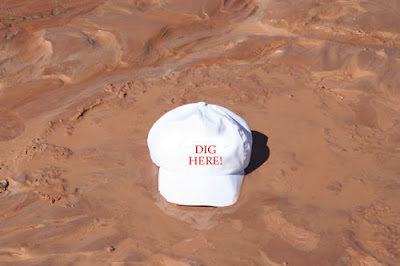- Joined
- Aug 18, 2018
- Messages
- 1,801
Horrible- I had no idea. I have been surprised about how many on BCP have experienced quicksand or heard about people being stuck. This article is very sad, tragic. Thanks for the info.
Follow along with the video below to see how to install our site as a web app on your home screen.
Note: This feature may not be available in some browsers.
Almost makes me want to carry a 2-3 foot hollow tube to breathe through if that happens.You could potentially 'go under' if the quicksand was under enough water (or obviously if the tide comes up like above). The experience I mentioned above on the middle Escalante made that abundantly clear. I was nearly chest deep in pretty swift water with my legs encased and it was more than a little freaky.
This is a really interesting story about getting stuck in quicksand for 12 hours on the Dirty Devil. It was a large NOLS group and they couldn't get him out. Hell, the SAR helicopter tried to pull him straight out and that didn't even work...
https://www.outsideonline.com/1916551/surviving-12-hours-quicksand
Almost makes me want to carry a 2-3 foot hollow tube to breathe through if that happens.
Can't pull straight out if quicksand.... It acts like one of those Chinese finger locks we had as toysYou could potentially 'go under' if the quicksand was under enough water (or obviously if the tide comes up like above). The experience I mentioned above on the middle Escalante made that abundantly clear. I was nearly chest deep in pretty swift water with my legs encased and it was more than a little freaky.
This is a really interesting story about getting stuck in quicksand for 12 hours on the Dirty Devil. It was a large NOLS group and they couldn't get him out. Hell, the SAR helicopter tried to pull him straight out and that didn't even work...
https://www.outsideonline.com/1916551/surviving-12-hours-quicksand
Good to know.there is still a lot of quicksand along the Southwest Desert trails in Zion, especially Huber Wash and Coalpits Wash.
Bring a walking stick to probe the ground if you aren't sure
The last Indiana Jones movie had it. Apocalyptica had it. Complete man-eaters!@regehr OMG, that's funny! What's the last movie with quicksand?
HR Puffenstuff was a pure acid trip without the acid.I swear I remember an episode of Sesame Street or Electric Company with someone in quicksand. the 60s/70s were weird.

Don't like ads? Become a BCP Supporting Member and kiss them all goodbye. Click here for more info.
